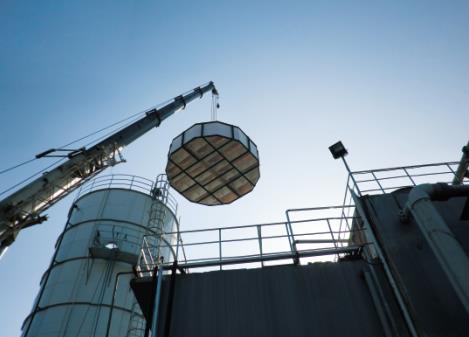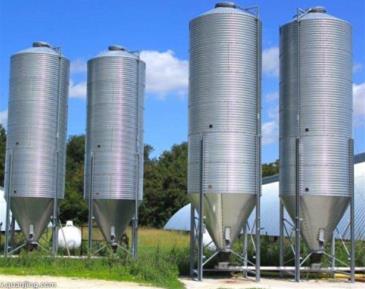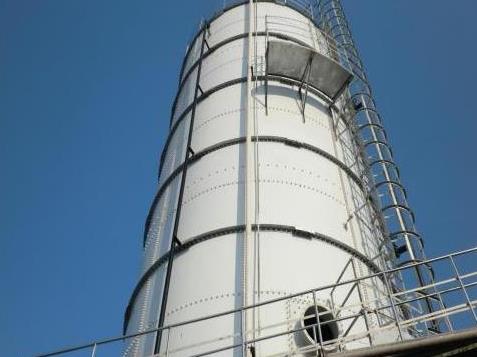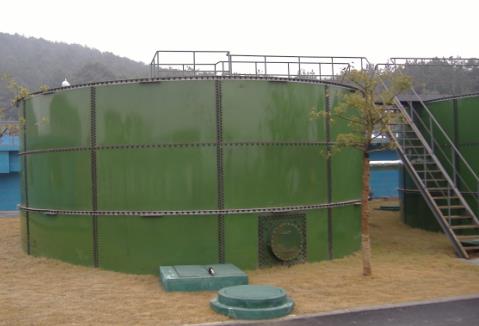silos for food grains manufacturer in north india
2018-08-15 10:04:06 By:NVirotech Bolted Tank (3397)
silos for food grains manufacturer in north india
Silo is a special building for grain storage. Mainly including warehouse, freight yard (or sunburn) and measurement, transportation, stacking, cleaning, loading and unloading, ventilation, drying and other facilities and equipped with measurement, sampling, inspection and testing and other instruments. Today, let's introduce silos for food grains manufacturer in north india.

silos for food grains manufacturer in north india is A special building for grain storage. The pouch storage pit in Yangshao culture period of China is the rudiment of grain storehouse. During the Zhou Dynasty and the spring and Autumn period and the Warring States period, more regular grain warehouses appeared. From the unearthed Eastern Han Dynasty Pottery Barn and pottery, there are two kinds of grain warehouses, which are round and square.
"Round Yue, Fang Yue", all belong to the viaduct, have the support of the timber columns that prevent the underground damp and flood, and have the window holes for ventilation and ventilation. It reflects the reasonable design ideas of more than one thousand years ago. In the Sui and Tang Dynasties, there were eight large warehouses in Beijing, including Jijia and Ming Dynasties, and the facilities were further improved.
The grain storehouse of ancient Egypt is a cylindrical building with circular top, and some of the wooden platform which protects the grain from the ants and other pests. The table base is spread with salt, and the upper entrance of the warehouse is the grain entrance. Although the form and structure of modern and modern grain warehouses have undergone great changes, they are basically developed on the basis of the above ancient types.
The design of silos for food grains manufacturer in north india should consider the factors such as grain, storage (Cang Rong) and building cost. In structure, it should meet the requirements of food safety storage and grain warehouse operation. Location and layout should take into account factors such as abundant grain sources, convenient transportation, adequate energy and high terrain.
According to the tasks undertaken, the state grain depot can be divided into 4 categories: (1) grain storage. Located in the grain producing area, it mainly receives the grain purchased from the state to the agricultural producers. Generally speaking, the main purpose is to build the storehouse, and the size of the warehouse should be matched to meet the needs of receiving multiple varieties of grain. Second, the transfer of grain depot. Located at the transport hub, the main grain received from the storage or port is stored for short storage and then transferred to the supply or storage. The silos are mainly the silos.
(3) supply of grain depot. The grain consumption areas, such as large and medium-sized cities, industrial and mining areas or economic crop areas, mainly receive grain from the receiver or transfer bank to supply grain processing plants or processed as finished grain or feed in situ and supply to grain stores for sale. The silos are mainly the silos. (4) reserve grain depot. The state has set up grain depots in order to store necessary grain to cope with special situations such as severe natural disasters. Generally, it is advisable to use a storehouse or underground warehouse with good moisture, heat insulation, airtight or ventilation conditions.
Because of the different structures, China's warehouse can be divided into: 1. The basic type of storehouse. Rectangular layout, double slope roof, mostly 20 meters long span single storey building, has a larger effective area and load capacity, each capacity of 2500 tons. It can be packed in bulk or packaged, which is easy to clean up, fumigate and disinfect, overturn grain piles and mechanically assemble and unload food.
(2) arched house. The vaulted roofs are replaced by brick vaulted roofs, which have 3 kinds of arc, parabola and suspension cable. The single arch in the horizontal axis is called single arch; the large span brick arch roof is also a small arch (or arch wave), which is called the double curved arch in addition to the arch of the horizontal axis. This granary building saves wood, is very strong, and the sealing condition is good for fumigation, but the construction is difficult. (3) thin shell house. Brick is used as a shell structure instead of a storehouse with small roof capacity for storage of small quantities of grain.
silos for food grains manufacturer in north india
It is a vertical and vertical deep bin, which is usually composed of 3 parts of a working tower, a bin group and a receiving device. It has a large capacity, and most of them have high mechanization and automation devices. The work tower is usually a multi-storey building with reinforced concrete or mixed structure. It is the operation center of the silo. It is equipped with various equipment such as transportation, weighing, cleaning, cleaning, and shunting. The grain is sent to each bin through the conveyor after each processing step. The bin consists of 3 parts: the top floor, the bottom and the barrel.
The top floor of the cylinder is used for storing the top conveyor for grain; the bottom of the cylinder is used for arranging the bottom conveyer and grain outlet pipe for grain, and the bin body is used for storing grain. A certain number of storehouses are composed of silo groups, which mostly use determinants, vertical lines and horizontal columns. The number of rows is usually 2~4, the number of columns is 4~8, the space between the 4 adjacent silos is called the star storehouse, and the grain can be stored. The receiving device mainly refers to the railway receiving device, the road receiving device and the terminal receiving device connecting the station or the wharf. It is composed of a mechanical shovel, a grain suction machine, a belt conveyer and a car incliner. This silo has many advantages, such as good sealing performance, high degree of mechanization and automation, large capacity and less land occupation. It has been widely used in various countries (see silos).
Besides, the main load-bearing structures such as silos and roofs of underground bunkers are buried below the ground. Because of the good underground heat insulation and tight sealing conditions, it is beneficial to the low temperature and dry storage of grain, some of the annual temperature is below 20 degrees C, and the grain can not be damaged by the pests and microbes, and the grain quality can be maintained for a long time. The underground warehouse also has the advantages of convenient construction and low cost. The soil bin is a simple silo with a straw grass structure. It is suitable for use in areas with less rainfall.
The general requirements are: (2) strong and durable. The warehouse should be able to withstand the lateral pressure of the grain against the silo wall and the total pressure on the bottom of the storehouse, so as to prevent cracking and subsidence. In general, masonry structure or reinforced concrete structure can also be made into steel silos with steel plates. (2) moisture-proof. Bunker walls, wall roots and floors are usually the most vulnerable parts of grain to damp and mildew. Therefore, the location of the storehouse should be selected at a low groundwater level, dry foundation and smooth drainage all over the place. Asphalt, oil felt, waterproof rubber and other moistureproof materials are laid on warehouse walls, floors and roofs.
(3) heat insulation. Fang Shicang's level is the main way for external heat into the warehouse. Therefore, additional roofing insulation or ceiling should be added to increase the heat insulation performance. For the warehouse of artificial refrigeration, the thermal insulation structure is often calculated according to the cold load and thermal resistance and thermal storage performance of the insulation material. Commonly used insulation materials are rice husk, vermiculite, expanded perlite, polystyrene foam and so on.
(4) ventilation. In the process of grain storage, ventilation is sometimes needed to cool down and disperse moisture. Sometimes it needs to be airtight to reduce the influence of external temperature and humidity on the grain in the storehouse. The ventilation problem is usually solved by setting windows and opening and closing timely in general warehouse. There are specially designed ventilation and ventilation devices such as radial ventilation device, geosyncline ventilation device and so on. Air tightness.
When using low oxygen, high nitrogen or high carbon dioxide for controlled atmosphere storage, warehouse is required to have enough air tightness to keep the effective concentration and ratio of gas in the warehouse. The airtight storehouse uses appropriate sealant and sealing technology to spray the sealing layer. The commonly used sealants are silicone rubber, asphalt rubber sealant, polychloroprene rubber, styrene - acrylic emulsion sealant, polyurethane foam, soft PVC copolymer liquid coating and so on. 6. Such as fence screen and anti - mouse door. In addition, in order to satisfy the requirements of granary operation, there should be a working tower, drying tower or sunning field and auxiliary structures connected to terminals or stations.
-
Related News:
- bio digester tank
- fire suppression for Water storage tanks
- storing food in silo
- anaerobic digestion
- gas tank biogas
- center enamel tanks





